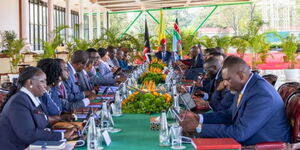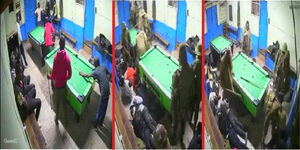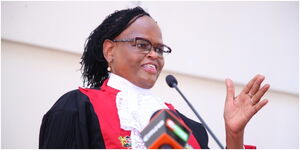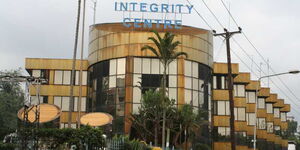History is told in various ways. Through word of mouth, books, newspapers and through buildings. Architectural buildings that have stood the test of time tell people's history, beliefs and what we can learn from it.
Kenya’s history is also told through it’s old building walls, that dot the streets of Nairobi.
Today, skyscrapers easily catch our attention; from the Britam Towers in Upper Hill to the magnificent Global Trade Center (GTC) along Waiyaki Way.
It's hard to believe at one point, a one story building was once the tallest in Nairobi for two decades.
Here are 7 building in Nairobi that have stood the test of time and still shine into the modern world of architecture
Kipande House
Located at the intersection of Loita Street and Kenyatta Avenue with its British architecture, Kipande house that was built in 1913 is still standing. Unknown to many, was once the tallest building in Nairobi.
The building came about when Pakistani national, Gurdit Singh Nayer saw the gap in infrastructure in Nairobi. With close assistance from English architect David Fialt, Nayer began the construction of Kipande House.
Sir Henry Conway Belfield who served as the first Kenyan governor between 1914 and 1917 came up with the Kipande system. The building was used as a centre for issuance of IDs to Africans.
Kipande House currently hosts Kenya Commercial Bank (KCB) after the lender acquired it in 1976.
Karen Bixen Museum
Karen Bixen Museum gained international fame after the release of Oscar Winning film, ‘Out of Africa’ based on Karen Bixen’s autobiography by the same title.
The house was built in 1912 by Swedish Engineer Ake Sjogren.
Karen Bixen and her husband, Baron Bro Von Blixen Fincke bought the house in 1917. After a failed marriage, Baron moved out of the farm house and left the farm to Karen. Karen lived in the house till 1931 before moving back to Denmark.
The house was then bought and sold multiple times until 1964 when the Danish government purchased it and gifted it to the Kenyan government as an independent gift. The government then set up a nutrition college and used the Bixen house as the principal’s house.
After the shooting of Out of Africa, the National Museums of Kenya acquired the building and is now the Museum we all know today. The Museum is located 10km from the city center and was opened in 1986.
Nairobi Post Office
The Nairobi post office opened its doors in 1907 and is now known as the General Post Office (GPO). It still stands at the same place along Kenyatta Avenue. The building hosts key government offices, including the famous GPO Huduma Centre.
At the time of the colonial rule, different colored flags were flown from its roof to announce the arrival of a mail boat from Europe at Aden or that it was time to post mail back to Europe.
Parliament Buildings
Legislation in Kenya dates back to colonial era. The Parliament Buildings were built during this era in 1954. The architectural design mimics the Big Ben Clock from the United kingdom.
Architects , Amyas Connell and Thornley Dyer were asked to design the new Legislative buildings for the British parliament.
It Currently hosts the National Assembly and the Senate .
All Saints Cathedral.
The Ministry of National Heritage has recognized All Saints Cathedral as one of Nairobi's largest and oldest churches because of its historical value.
The Anglican Church constructed in 1917, and it was previously dedicated as a cathedral in 1952.
The cathedral was built in Kenyan stone and fashioned in the British Gothic style, resulting in a perfect mixing of the two cultures. The cathedral's façade is dominated by two massive stone towers that reflect medieval England.
Africans were not allowed to use the venue for worship until 1963, when Kenya became a republic. After seven years, Bishop Festo Habakkuk Olang’ became the country's first African Archbishop of the Anglican Church.
McMillan Memorial Library
The Governor of Kenya, Sir Joseph A. Byrne, officially opened the Library on June 5, 1931.
The building has a neo-classical architecture with a great white marble trapezoidal stairway going up to the portico and towering granite-clad columns dominating the façade. On either side of the entrance, two lion statues stand guard.
It was named in honour of Sir William Northrup McMillan, a wanderer and pioneer. McMillan was a successful businessman in the United States and Europe.
The McMillan Library is a rich store of information, with over 400,000 books and periodicals dating back to 1901, including East African newspapers and journals. It also has a collection of Parliamentary proceedings dating back to Kenya’s early years as a republic.
Kenyan National Archives
The National Archives was built in 1965. It holds 40,000 volumes of public records and archives.
It also houses the Murumbi Gallery which contains African artifacts that were collected in the 19th century.
It was established by an Act of Parliament Kenya in 1965.












